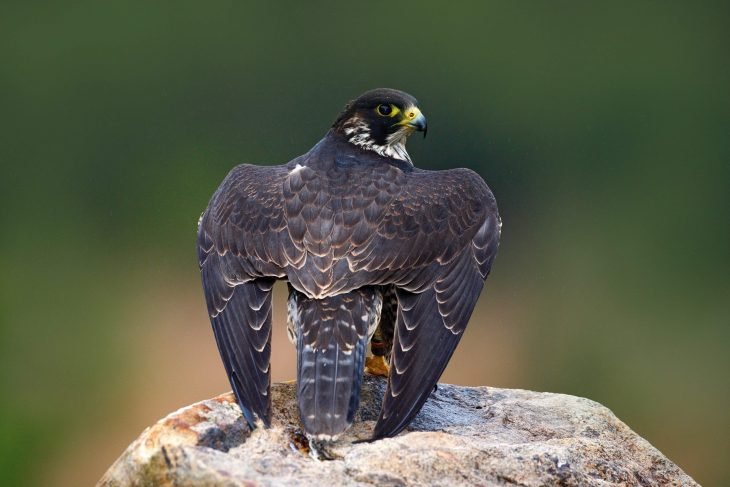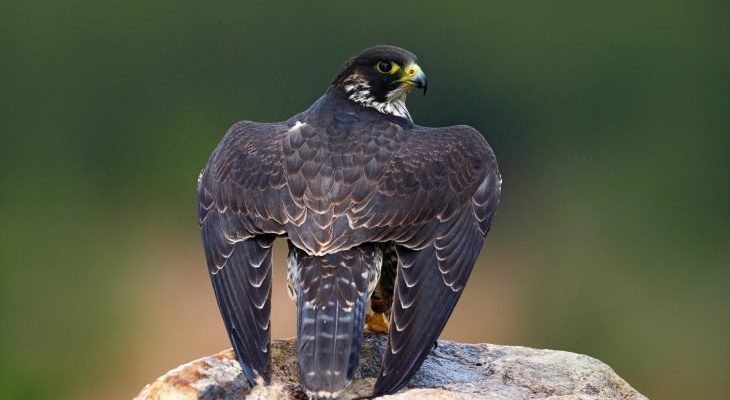
So, why should we care about this feathered powerhouse? Well, beyond its impressive speed, the peregrine falcon plays an essential role in our ecosystems and has a fascinating history as well. These birds have adapted remarkably to urban environments, proving that nature can thrive even in the hustle and bustle of city life. Let’s dive into some of the most fascinating facts about the peregrine falcon that will surely leave you in awe.
1. The Fastest Animal on the Planet
When we talk about speed, the peregrine falcon takes the crown. This bird can reach astonishing speeds of over 200 miles per hour when it dives to catch its prey. Picture this: you’re standing on the ground, and suddenly, a falcon swoops down from the sky like a dart. In real-life terms, that’s faster than a cheetah in a sprint!
But how do they achieve such remarkable speed? It all comes down to their unique body structure. Their aerodynamic shape, narrow wings, and strong muscles allow them to slice through the air effortlessly. When they spot a target, they tuck in their wings and go into a dive. This technique, known as stooping, enables them to maximize their speed. Honestly, it’s like watching a feathered missile in action!
2. A Global Presence
Did you know that peregrine falcons are found on every continent except Antarctica? That means these birds have adapted to a wide range of habitats, from urban skyscrapers to remote mountain ranges. Their ability to thrive in diverse environments showcases their resilience and adaptability.
In cities, you might spot them nesting on tall buildings, utilizing the ledges as if they were high cliffs. Urban peregrines have even learned to hunt pigeons, which makes for a surprisingly effective hunting ground. Here’s the thing: their adaptability is a testament to how wildlife can coexist with humans, finding ways to thrive amidst our concrete jungles.
3. Remarkable Hunting Skills
Peregrine falcons are known for their incredible hunting skills, and much of that comes down to their keen eyesight. They have excellent vision that allows them to spot prey from miles away, and their ability to track movement swiftly is nothing short of impressive.
When they hunt, they often employ a tactic called surprise attack. They perch high and wait patiently for the right moment to dive. Once they hone in on their target, they swoop down at lightning speed, striking with powerful talons. It’s a combination of stealth and speed that makes them such effective hunters. Can you imagine being a small bird in the presence of such a predator?
4. Unique Feather Structure
The feathers of the peregrine falcon are adapted to their high-speed lifestyle. Unlike some birds that have fluffy feathers, peregrines have a sleek, streamlined feather structure that helps reduce drag during their rapid dives. These feathers are more rigid, allowing them to cut through the air with minimal resistance.
Additionally, their feathers have a unique anti-drag design. By overlapping in a specific way, they create a sort of barrier that keeps air from slowing them down. So, when you see a peregrine falcon take flight, remember that those feathers play a crucial role in its remarkable speed and agility.
5. Interesting Nesting Habits
When it comes to raising their young, peregrine falcons have some fascinating nesting habits. They prefer to nest on high cliffs or tall buildings, where they can keep an eye on their surroundings. These locations provide a safe haven from predators and easy access to hunting grounds.
Typically, they have a nesting site, known as an eyrie, where they lay their eggs. A typical clutch consists of three to four eggs, which both parents will take turns incubating. Once the eggs hatch, the chicks are fed a diet rich in protein, primarily consisting of birds. Watching the young falcons grow and eventually learn to fly is a heartwarming sight—a testament to the care and dedication of their parents.
6. Conservation Success Story
The peregrine falcon has an inspiring story of recovery. In the mid-20th century, their population faced a steep decline due to the effects of pesticide use, particularly DDT. This chemical caused eggshell thinning, leading to reduced hatching success.
Thanks to dedicated conservation efforts, the peregrine falcon population has rebounded dramatically. Legal protections, along with breeding programs, have helped restore them to healthy numbers. Nowadays, they are often seen in urban areas, showcasing just how powerful conservation initiatives can be. It’s a shining example of how we can turn the tide for endangered species.
7. The Role of Vocalizations
Peregrine falcons are not just impressive flyers; they also have a unique way of communicating. They use a variety of vocalizations to convey different messages. Their calls can be sharp and quick, often used during courtship or to signal danger.
Interestingly, these vocalizations vary among individual birds. Some falcons have distinct calls that can help them identify each other in a crowded area. Imagine being able to recognize the sound of your best friend’s voice in a bustling café—that’s how these birds operate. Their calls are essential not just for communication, but also for maintaining their territory and fostering social bonds.
8. Lifespan and Mating Rituals
The peregrine falcon has a lifespan that typically ranges from 10 to 15 years in the wild, although some have been known to live longer. One of the most beautiful aspects of their life cycle is their mating rituals. These birds are often monogamous and will mate for life. Their courtship displays include aerial acrobatics, where they perform stunning dives and flips to impress each other.
Their bond strengthens as they raise their young together. This teamwork is crucial, especially when it comes to hunting and protecting their chicks from potential threats. Watching them in action is like witnessing a perfectly choreographed ballet in the sky—full of grace and emotion.
9. A Symbol of Strength and Freedom
Throughout history, the peregrine falcon has been celebrated as a symbol of strength and freedom. In many cultures, they’ve been revered as powerful creatures, representing the spirit of the wild. People often associate them with qualities like endurance, bravery, and independence.
Interestingly, they often appear in literature and art, symbolizing perseverance against adversity. In more modern contexts, they have become icons for various conservation campaigns, highlighting the importance of protecting our natural world. The peregrine falcon embodies the wild spirit that many of us admire.
10. The Future of the Peregrine Falcon
So, what does the future hold for the peregrine falcon? As urban environments continue to expand, these birds may face new challenges. However, their adaptability gives us hope. Continued conservation efforts and public awareness will be vital in ensuring they thrive.
People are increasingly drawn to observing these majestic birds, which has led to educational programs and initiatives aimed at protecting their habitats. By fostering a love for these incredible creatures, we can help ensure their survival for generations to come. After all, every time we see a peregrine falcon soaring through the sky, it serves as a reminder of the beauty and resilience of nature.
In conclusion, the peregrine falcon is more than just a fast bird; it’s a fascinating creature with a rich story that intertwines with our own. From its impressive hunting skills to its conservation success, there’s so much to admire about this remarkable raptor. Whether you’re watching them in the wild or reading about them, their presence is a testament to the wonders of our natural world.

